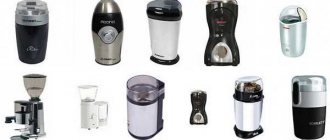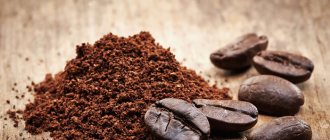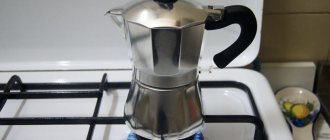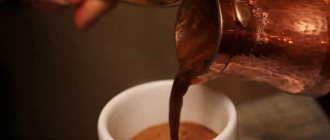“Can I have a large, triple-shot, sugar-free, non-fat latte, please?” “Can I have a large, triple, low-fat, no-sugar latte, please?”
If you're wondering when you hear this phrase, you're not alone.
Sometimes ordering coffee is like learning another language, but if you are a coffee lover, there is no escape from it.
This is also a good way to start immersing yourself in a language environment. You already know how to order food in English like a local, as well as a list of basic words related to fast food.
But the coffee shop is a completely different story.
In a coffee shop (or cafe), the menu is read while standing in line. And when they approach the counter, they tell the cashier their order.
The cashier may ask some general questions about your order.
Knowing these basic words and phrases before you step foot in the café will help you order with confidence and order what you really want!
Download: This blog post is available as a convenient and portable PDF that you can take anywhere. Click here to get a copy. (Download)
History of origin
The tradition originates in the town of Stone, Wisconsin at the end of the 19th century. The wives of Norwegian immigrants were the first to arrange such a break. Local residents later founded the Stoughton Coffee Break festival, which has been held annually since 1880. The Pan American Coffee Bureau popularized coffee gatherings to raise awareness of the beans in America. In 1936, after an advertising campaign, Americans began to take coffee breaks during business negotiations. Over time, it began to be arranged in Europe. In Russia, such events spread in the late 1990s.
General information about coffee breaks
A coffee break is an important part of the working day during business meetings, scientific conferences, symposia, etc.
At formal meetings, it is carried out at strictly designated times. A table with drinks and various snacks is set in the conference room or special room. In offices, such breaks can be held for employees in the morning and evening in the rest area.
Purpose of the event
During formal events, the need to process large amounts of information and the sitting position quickly drain the body. Therefore, the organizers arrange a coffee break, the purpose of which is to restore strength with a cup of aromatic drink. This time can be used to comprehend the knowledge gained, communicate with other participants, and relax.
Event Rules
When planning a coffee time-out, the status and number of participants and the duration of the event are taken into account. Typically, a maximum of 40 minutes is allocated for it. Tea, coffee and light meals are provided.
Etiquette
Organizing an event begins with choosing a venue. For a small number of guests, you can allocate a seating area in the room where the event is taking place. If there are more than 15 people, it is better to choose another room.
When holding a coffee break, adhere to the following rules:
- A period of 15 to 40 minutes is enough to take a break, but not enough for complete relaxation.
- Coffee breaks are arranged every 2.5-3 hours. If a long event is planned, interruptions are made 3-4 times.
- In addition to tea, coffee and other drinks, light snacks (canapés, sandwiches, sweet pastries) are served.
- The first coffee break takes place at the beginning of the meeting, the last - a buffet - after the end of the negotiations or conference.
- A pause involves communication, so music, TV and entertainment in the room will be unnecessary.
- You cannot take snacks with you into the meeting room.
The format of the event depends on the status of the participants and the type of meeting. At business negotiations, seminars or at work over a cup of drink, guests communicate in an informal setting, so it is better to organize self-service.
International meetings require a coffee break, which resembles a banquet with a high level of service.
Start with one of these phrases
Now that you've reviewed the menu and made your selections, it's time to order!
When you approach the counter, you will have to say little more than “Coffee, please.” Here are some simple phrases that will help you order coffee like a local.
Simple and polite
“Hello. I’d like a small latte, please.” "Hello. I'd like a small latte, please."
Fast and informal
“Could I have a medium coffee to go?” “Can I have a medium coffee to go?”
“Can I get a large piss for here?” “Can I have a large mocha, here?”
“I'll take a small coffee and a donut, please.” “I’d like a small coffee and a donut, please.”
Ask about the menu
“Hello. Do you have any low-calorie drinks?” "Hello. Do you have low calorie drinks?
(cashier answers)
“Okay, I'd like a large green tea, please.” "Okay, I'd like a large green tea, please."
Ask the cashier how he's doing and you'll also practice having a friendly conversation
“Hi. How are you doing?” "Hello how are you doing?"
(the cashier answers and asks how you are doing)
“Great. Okay, I'd like a large black coffee to go, please.” "Wonderful. Okay, I’d like a big black coffee, please take it with you.”
Subtleties of organization
When preparing such a holiday, the menu and table setting are taken into account. The higher the position of the event participants in society, the more expensive the products. When creating a menu, you must remember that you are planning a snack, not a full lunch. Much attention is paid to the quality and quantity of drinks. For high-level meetings, natural coffee and tea are required. To keep them warm, you can use restaurant thermoses.
The choice of dishes depends on the nationality of the invited persons and the level of the event. For Europeans, hygiene is important, so they buy disposable plates and cutlery in individual packaging. Russians perceive such serving as a sign of economy. For influential people, choose porcelain, glass or crystal dishes.
For large events, baristas and coffee ladies are hired, whose duties include preparing and serving drinks.
Application of a break
The situation described above is usually a situation in which the rules of a boxing match are violated. A break in boxing is a call from the judge to stop the fight. In military terms, this is even an order. Having heard the break command in boxing, the fighters must immediately disengage and disperse. Each of them literally needs to take a step back. The mutual takeover must stop.
Break in boxing, what is it? This is the referee's command, this is an aspect of the rules. For disobedience, points may be taken away from a boxer. In the worst case, he will be disqualified.
If the boxers clearly follow this command, both step back a little, then they have the right to continue the fight without other referee commands.
Menu options
Different menus are developed for seminars, international conferences, and business negotiations. They differ in the number of positions and types of drinks. The basic set includes serving coffee and tea with sweet pastries. During the coffee break, important people are given additional water, juices, and a lot of cold snacks.
Basic
Be sure to offer black and green tea bags and instant coffee. Additionally, lemon, cream, and sugar are placed on the table. Sweet pastries are served with drinks: muffins, cupcakes, chocolate and shortbread cookies.
Economy
This option is suitable for feeding office workers. In addition to standard drinks, the budget menu includes berry and fruit juices. Guests are offered canapés with various fillings (pate, cucumbers, ham, cheese), chocolates, and pastries.
Traditional
Such a pause is arranged at conferences or important business negotiations. Preference is given to more satisfying dishes compared to the budget option. The traditional menu contains sandwiches (with chicken and lettuce, boiled pork, salmon, salami), canapés and 2-3 types of cheese on skewers.
The list of drinks includes coffee beans, several types of tea (in bags), juices, sparkling and still water. For dessert, croissants, sweets and fruit are served.
Premium
The menu is developed for events where guests with VIP status gather. A small mistake can cost the organizers their reputation. They often hire catering companies to turn their leisure time into a mini-banquet.
The premium menu contains many items:
- natural coffe;
- black, green tea;
- juices;
- fruit drinks, lemonades from fresh fruits and berries;
- water in glass bottles (with or without sparkling water);
- meat and vegetable sandwiches;
- tartlets (with caviar, shrimp, cheese);
- canapés with different fillings;
- cheeses, fruits on skewers.
Guests can enjoy small cakes, pastries (strudel, charlotte, profiteroles), chocolate mousse, and sweet mini-pies. In addition to drinks, in addition to the basic set, honey, jam and sweetener are served.
Alcohol
Alcohol is included in the coffee break menu at semi-formal meetings or at the end of an event. In addition to standard drinks and dishes, it includes hot snacks and table wines.
Coffee break traditions from around the world
Residents of different countries set aside a few minutes every day to drink a cup of aromatic drink. For Ethiopians, such a holiday is an ancient ritual with many rules. Americans and Germans continue to work during the coffee break. Residents of Latin America, Sweden and Austria are accustomed to drinking coffee leisurely in the company of friends or colleagues.
USA
The phenomenon became widespread in the country when trade unions were allowed to give workers rest during the working day. Coffee timeout occurs every 1-1.5 hours, but Americans do not have a special break. They do not interrupt work or negotiations, so they prefer light snacks. You can use standard dishes (including paper glasses). 2-3 types of drinks made from natural grains are enough.
Ethiopia
For Ethiopians, buna tetu, which translates to “drinking coffee,” lasts about 3 hours. They do not welcome quick coffee breaks and do not limit themselves to 1 cup. Here, preparing and drinking a drink is a ritual that shows respect and welcome towards those invited.
The ceremony is carried out in compliance with the following rules:
- Before roasting the beans, incense is burned to ward off evil spirits.
- The youngest woman in the house does the cooking.
- The roasted grains are given to all guests to smell so that they can feel the aroma.
- The drink is prepared in a jebene, a vessel for brewing coffee.
- The eldest member of the family tries it first.
- Each guest drinks 3 cups. Ethiopians believe that the first gives a taste, the second brings good luck, and the third blesses.
- During such a break it is not customary to discuss business.
Guests are offered several varieties of different strengths. The aromatic drink is poured into cups made of bamboo, ceramics or porcelain. They do not have handles, so you need to hold them by the rim. Buna tetu can be held 3 times a day.
Sweden
Relaxing with a cup of coffee is called fika. It is part of everyday life for Swedes. In offices, universities, schools, breaks are taken at least 2 times a day for 10-30 minutes. Locals drink a fresh drink in the company of friends and colleagues. Fika is a reason to relax and take your time, so business conversations are not allowed at this time.
Scandinavians add fresh beans to the grounds to brew coffee a second time. That's why in Sweden they prefer low roasting. Traditionally, they offer 7 types of homemade pies. Swedes drink coffee with a piece of cake, a cinnamon roll, chocolate chip cookies or savory snacks. They often add alcohol to the drink.
Latin America
In the region, it is customary to take a break in the afternoon, called Merienda. This is a light snack between a hearty lunch and dinner. It includes coffee, tea, hot chocolate, alcohol. For snacks they offer sliced fruits, cookies, and yogurt. In summer, hot drinks replace cocktails and juices. Argentines and Paraguayans rest around 5 pm. They drink mate or herbal tea with toast, buns, and cake. Honey, butter, and jam are always placed on the table.
Austria and Germany
In these countries, a second breakfast is served from 10 to 11 am. Many people prefer a natural drink, which is served with a large number of snacks in separate plates. Austrians don't like to drink it in a hurry. Over a cup of strong coffee with cream, they talk with friends and read newspapers. In Austria, it is always served with a glass of water and a bagel. There are no long coffee breaks in Germany. During working hours, Germans rest 2 times a day for 5-10 minutes. They drink coffee without interrupting their work and relax during lunch.
Terms in international meetings
Holding international boxing tournaments of various levels is standard business. And when fights take place between boxers from different countries, the following terminology comes into force
- Award of victory due to the most points: PTS. Sounds like - On points.
- Win by obvious advantage: RSC. Transcript - Referee stop contest.
- Same as point 2, only because of hits to the head: RSCH: Referee stop contest heard.
- Another variation of point 2. The bottom line: the loser cannot continue the match: RSCI: the same words + injury.
- Third variation of paragraph 2. The bottom line is that a fighter wins if he lands more blows than he misses. And this difference exceeds 15 strokes. This principle only works until round 4. Notation: RSCO: same words + out class.
- Victory due to refusal of any second: RET. Completely – Retention
- Disqualification: DISQ. Completely – Disqualification.
- Knockout: KO. Full – Knockout











